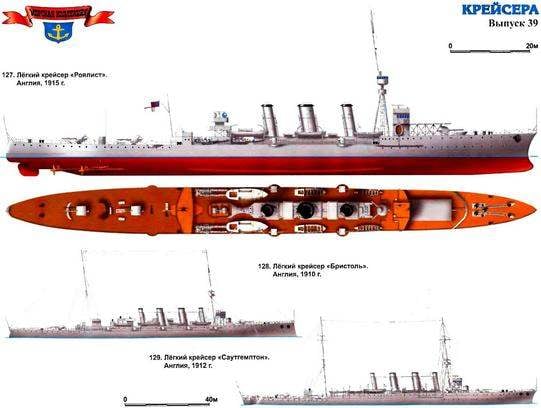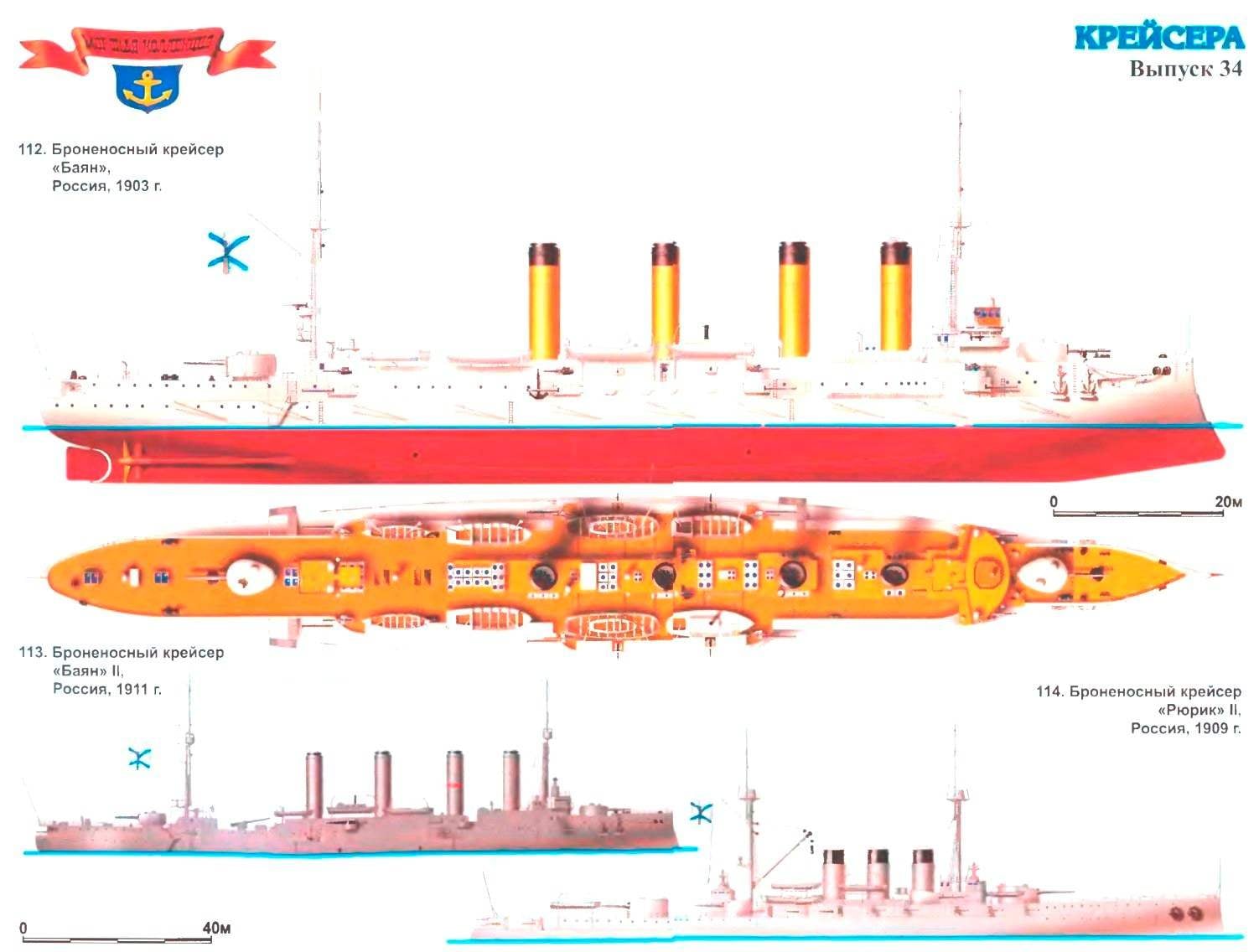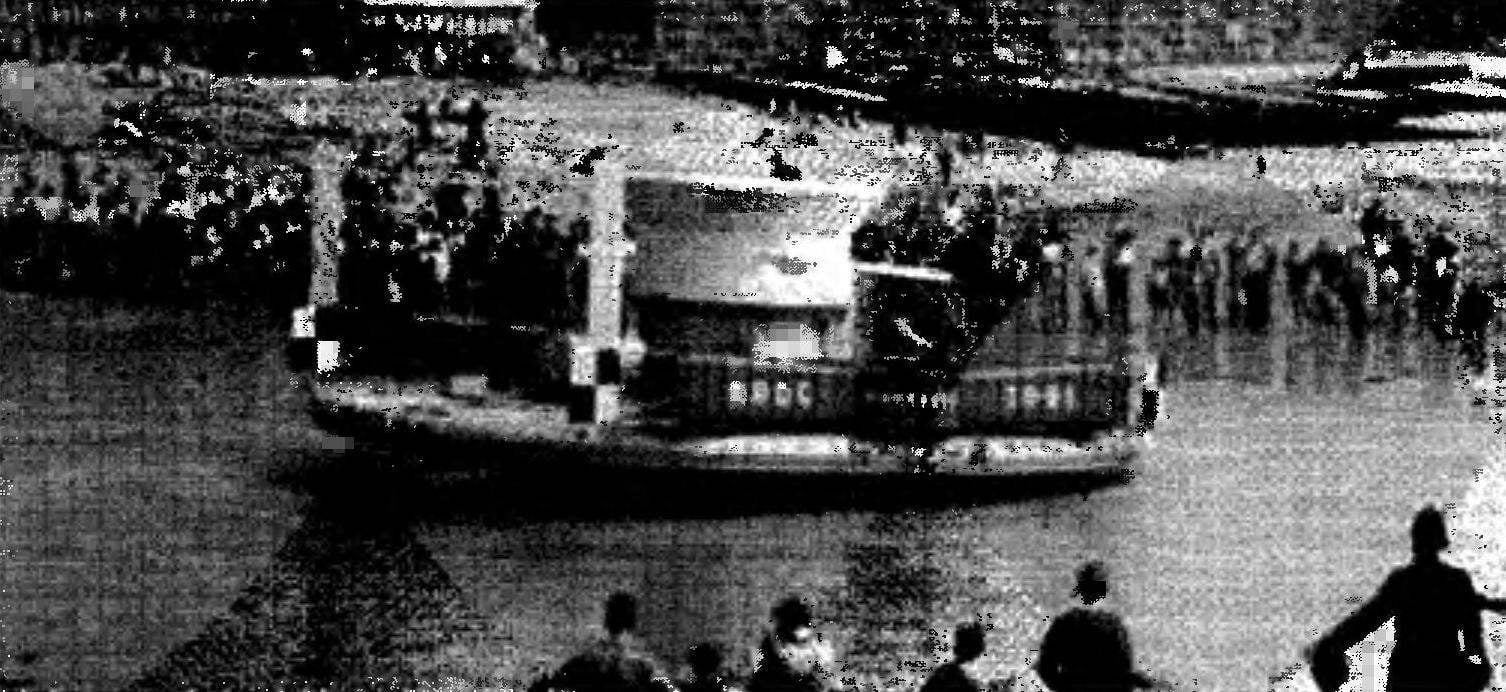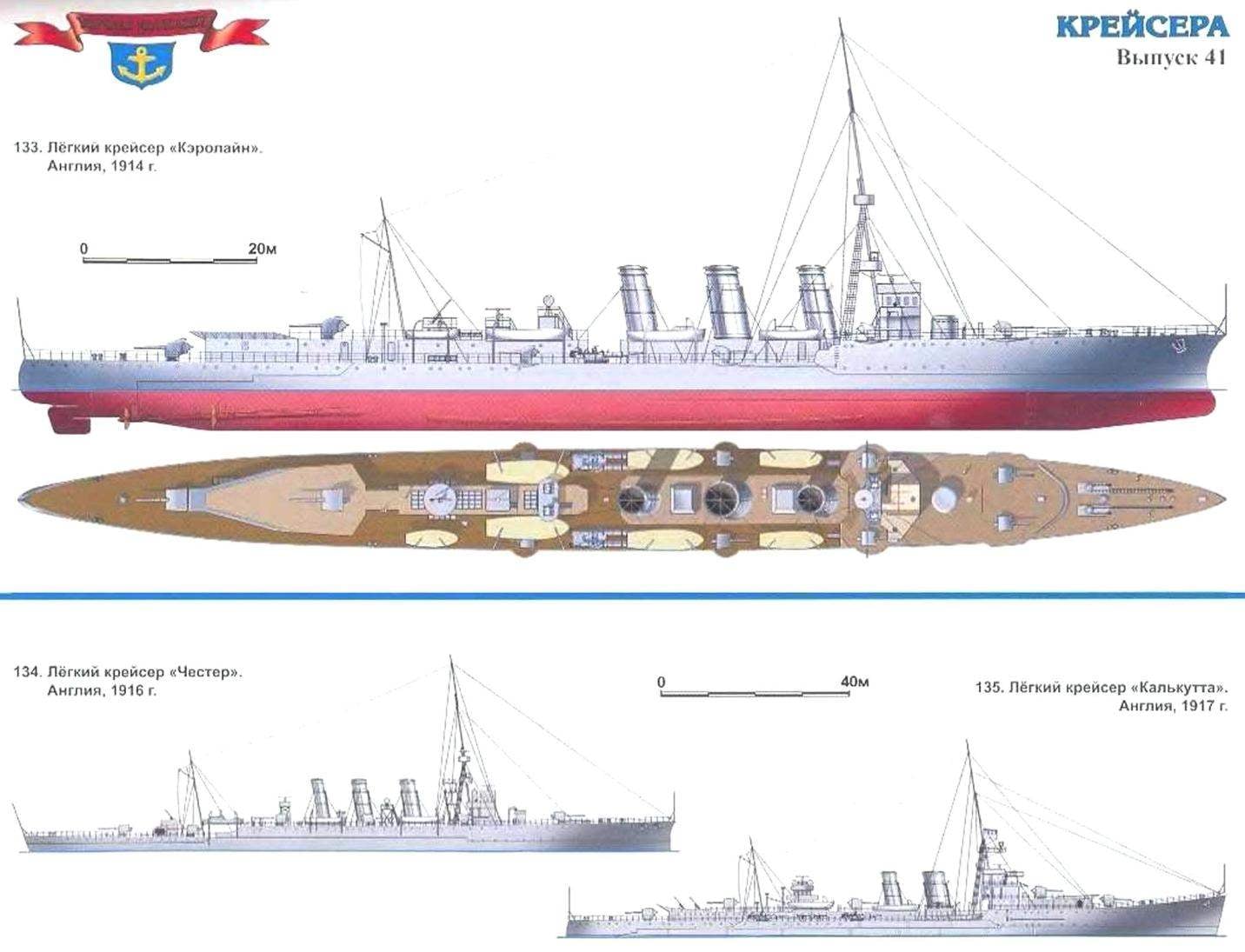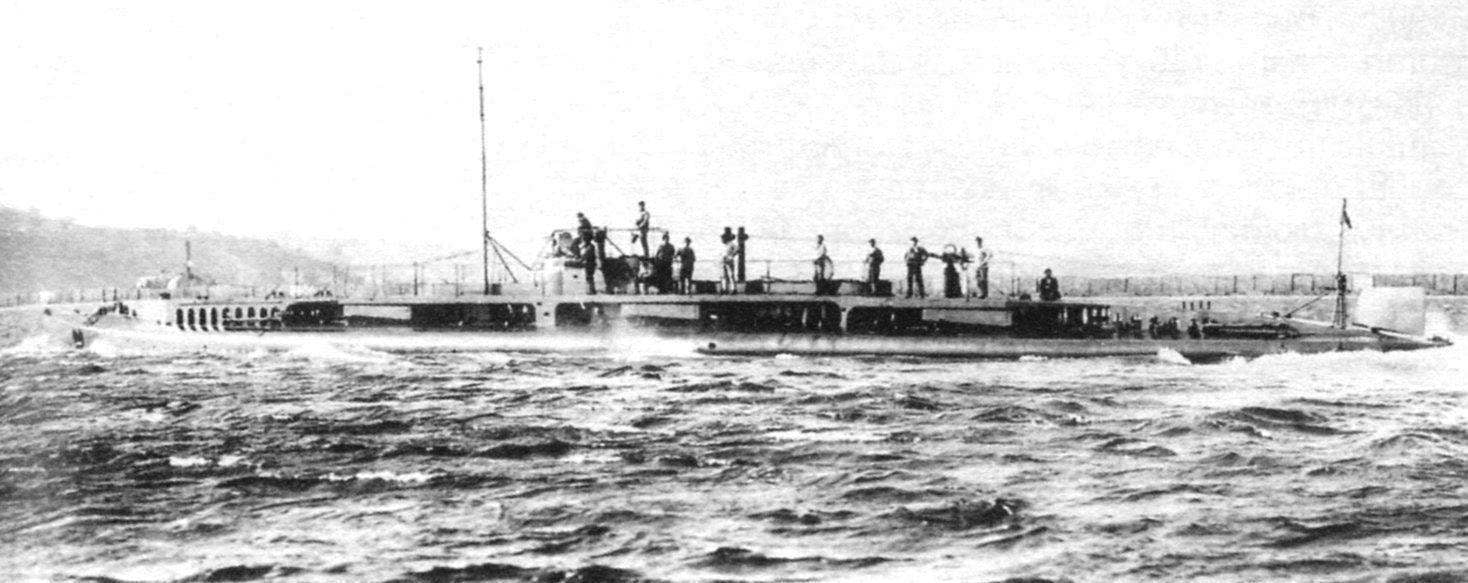 Huge British Navy after the Russo-Japanese war got rid of one potential enemy, Russia, is able to deliver him a lot of troubles on the ocean trade routes. But along with this tangible success achieved by the hands of others gradually arose a new, more dangerous threat in the face of Germany. The Kaiser’s fleet had not yet had enough strength to confront the British in open battle, but could deliver a lot of trouble because of his light forces. Especially small cruisers, which number increased from year to year, and the speed steadily increased from series to series.
Huge British Navy after the Russo-Japanese war got rid of one potential enemy, Russia, is able to deliver him a lot of troubles on the ocean trade routes. But along with this tangible success achieved by the hands of others gradually arose a new, more dangerous threat in the face of Germany. The Kaiser’s fleet had not yet had enough strength to confront the British in open battle, but could deliver a lot of trouble because of his light forces. Especially small cruisers, which number increased from year to year, and the speed steadily increased from series to series.
Marine
A FAILED “DOUBLE”
 The unsuccessful Russo-Japanese war caused a powerful flow of criticism and accusations against Russian warships, primarily cruisers. The unenviable fate of our clumsy “goddesses” swift and graceful “shestidesyatnikov”, most of them internetoffice after receiving not too extensive damage, gave rise to attacks on the very type of ocean-going armored cruisers. Somehow “suddenly” found that such ships are not able to fight in line battles (which, however, they never intended). Specialists and idle public organizations began to look for their ideal. And, in the end, found in the person of the only armored reconnaissance squadron, the cruiser “Bayan”. Meanwhile at the appearance of this cruiser does not cause such enthusiasm.
The unsuccessful Russo-Japanese war caused a powerful flow of criticism and accusations against Russian warships, primarily cruisers. The unenviable fate of our clumsy “goddesses” swift and graceful “shestidesyatnikov”, most of them internetoffice after receiving not too extensive damage, gave rise to attacks on the very type of ocean-going armored cruisers. Somehow “suddenly” found that such ships are not able to fight in line battles (which, however, they never intended). Specialists and idle public organizations began to look for their ideal. And, in the end, found in the person of the only armored reconnaissance squadron, the cruiser “Bayan”. Meanwhile at the appearance of this cruiser does not cause such enthusiasm.
SLIDING OVER THE WAVES
 Ships rise into the air. From the moment when the English hovercraft (SVP) CR.N1 in July 1959, crossed the 32-mile Strait of Dover (or the better-known us — Pas-de-Calais) between the ports of Calais on the French coast of continental Europe, and Dover on the island Kingdom, its inventor Christopher Cockerell became famous all over the world…
Ships rise into the air. From the moment when the English hovercraft (SVP) CR.N1 in July 1959, crossed the 32-mile Strait of Dover (or the better-known us — Pas-de-Calais) between the ports of Calais on the French coast of continental Europe, and Dover on the island Kingdom, its inventor Christopher Cockerell became famous all over the world…
ROLE MODEL
 The conduct of hostilities rivers are a serious obstacle to the attacking side. Not accidentally during the Second world war, a powerful defensive lines were built on their shores; suffice it to recall the well-known German Eastern wall, an important part of which became the Narva river, Sozh, Dnieper and Dairy. It is significant that after the victorious conclusion of the Battle of the Dnieper which lasted from August to December 1943 for heroism 2438 most distinguished soldiers, sergeants and officers all the armed forces was awarded the title of Hero of the Soviet Union (in just four years of the great Patriotic war awarded the gold Star medal were 11 603 warrior).
The conduct of hostilities rivers are a serious obstacle to the attacking side. Not accidentally during the Second world war, a powerful defensive lines were built on their shores; suffice it to recall the well-known German Eastern wall, an important part of which became the Narva river, Sozh, Dnieper and Dairy. It is significant that after the victorious conclusion of the Battle of the Dnieper which lasted from August to December 1943 for heroism 2438 most distinguished soldiers, sergeants and officers all the armed forces was awarded the title of Hero of the Soviet Union (in just four years of the great Patriotic war awarded the gold Star medal were 11 603 warrior).QUITE INDEPENDENT “TODDLER”
 Talking about the rapid development of cruiser forces such Maritime giants like Britain, Germany, France, Russia, it would be unfair to forget about a much more modest powers of Europe, had, nevertheless, own shipbuilding tradition. These States tried to implement them into the metal, consistent with their needs and capabilities.
Talking about the rapid development of cruiser forces such Maritime giants like Britain, Germany, France, Russia, it would be unfair to forget about a much more modest powers of Europe, had, nevertheless, own shipbuilding tradition. These States tried to implement them into the metal, consistent with their needs and capabilities.LONG-RUNNING LETTER
 Copies of the first decade of the twentieth century was for all the sailors of Europe, and the English, in particular, is very tense. The terrible specter of a future war and an elusive championship in the world forced the admirals “mistress of the seas” require for growing, by leaps and bounds, the Grand fleet more ships of all classes, not just battleships. To provide intelligence for action last and to protect them from enemy light forces had the latest high-speed cruisers, and several dozen. In such situation on the foreground the luck incorrectly designed version managed to replicate even before the defects would manifest itself in the service. Fortunately for Britain, at the disposal of designers there was quite a decent naval project leader-scout “Aretusa”. The Admiralty has taken the path of least resistance (in this case it is wise) is ordered by 1913 six more cruisers of the same type, making the project only a small change. A young talented engineer, Stanley Goodall, which was led personally by the shipbuilder to the Navy, Eustace Tennis d Ankort, prepared sketches in just a few days.
Copies of the first decade of the twentieth century was for all the sailors of Europe, and the English, in particular, is very tense. The terrible specter of a future war and an elusive championship in the world forced the admirals “mistress of the seas” require for growing, by leaps and bounds, the Grand fleet more ships of all classes, not just battleships. To provide intelligence for action last and to protect them from enemy light forces had the latest high-speed cruisers, and several dozen. In such situation on the foreground the luck incorrectly designed version managed to replicate even before the defects would manifest itself in the service. Fortunately for Britain, at the disposal of designers there was quite a decent naval project leader-scout “Aretusa”. The Admiralty has taken the path of least resistance (in this case it is wise) is ordered by 1913 six more cruisers of the same type, making the project only a small change. A young talented engineer, Stanley Goodall, which was led personally by the shipbuilder to the Navy, Eustace Tennis d Ankort, prepared sketches in just a few days.
BARKAS UNDER THE “WHITE SUN”
 The film “White sun of the desert” became a significant phenomenon in the life of our country — its popularity can be judged by how many sayings and winged expressions added to the lexicon of the Soviet people. Viewers memorable movie characters, ably played by P. Luspekaev, A. Kuznetsov, S. Mishulin, and other beautiful actors. It is worth noting that in this film in addition to animated wonderful actors played their roles and inanimate actors – one of them appeared in the film in the most dramatic of its time.
The film “White sun of the desert” became a significant phenomenon in the life of our country — its popularity can be judged by how many sayings and winged expressions added to the lexicon of the Soviet people. Viewers memorable movie characters, ably played by P. Luspekaev, A. Kuznetsov, S. Mishulin, and other beautiful actors. It is worth noting that in this film in addition to animated wonderful actors played their roles and inanimate actors – one of them appeared in the film in the most dramatic of its time.UNDERWATER SHIPS AGAINST SUBMARINE SHIPS
 In No. 12 last year, is dedicated to the development of the underwater of the pioneers in France, we elaborated on the competitive product engineer Mogh “pure” submarine “Z”. Although she completely lost comparative tests of the “dive” from Lobata, however, the Commission did not recognize the idea of traditional French submarine, conducting most of the time under the surface of the water, completely “buried.” And as a result of persistent Moga reward for persistence has received an order for a series of 6 units are named after precious stones.
In No. 12 last year, is dedicated to the development of the underwater of the pioneers in France, we elaborated on the competitive product engineer Mogh “pure” submarine “Z”. Although she completely lost comparative tests of the “dive” from Lobata, however, the Commission did not recognize the idea of traditional French submarine, conducting most of the time under the surface of the water, completely “buried.” And as a result of persistent Moga reward for persistence has received an order for a series of 6 units are named after precious stones.
THE DIRECT HEIRS OF THE NAMED
 The Germans switched to the onboard booking their light cruisers almost simultaneously with the future enemy — the British. A long series of German pronaplucan ended in 1910, when the stocks of Bremen, štětina and Wilhelmshaven laid four essentially new ships. Although they still wore the names of German cities and had only 300 — 400 tons greater displacement than the previous “Kolberg”, the differences between new and old “statov” were much more than similarities.
The Germans switched to the onboard booking their light cruisers almost simultaneously with the future enemy — the British. A long series of German pronaplucan ended in 1910, when the stocks of Bremen, štětina and Wilhelmshaven laid four essentially new ships. Although they still wore the names of German cities and had only 300 — 400 tons greater displacement than the previous “Kolberg”, the differences between new and old “statov” were much more than similarities.
“BEAVERS” AND “SEALS” THE KRIEGSMARINE
 The German Navy was engaged in an ultra-small boats only in 1944. Prior to this the Germans managed to capture a number of European States, without resorting to the use of underwater diversionary means. The only “small” submarine that was developed in the early years of the war, was V. 80. But it is not planned to use for combat purposes, this 4-person submarine was used only for testing balcerowski turbines. She had a displacement of 71/80 tons and a length of 26 meters.
The German Navy was engaged in an ultra-small boats only in 1944. Prior to this the Germans managed to capture a number of European States, without resorting to the use of underwater diversionary means. The only “small” submarine that was developed in the early years of the war, was V. 80. But it is not planned to use for combat purposes, this 4-person submarine was used only for testing balcerowski turbines. She had a displacement of 71/80 tons and a length of 26 meters.